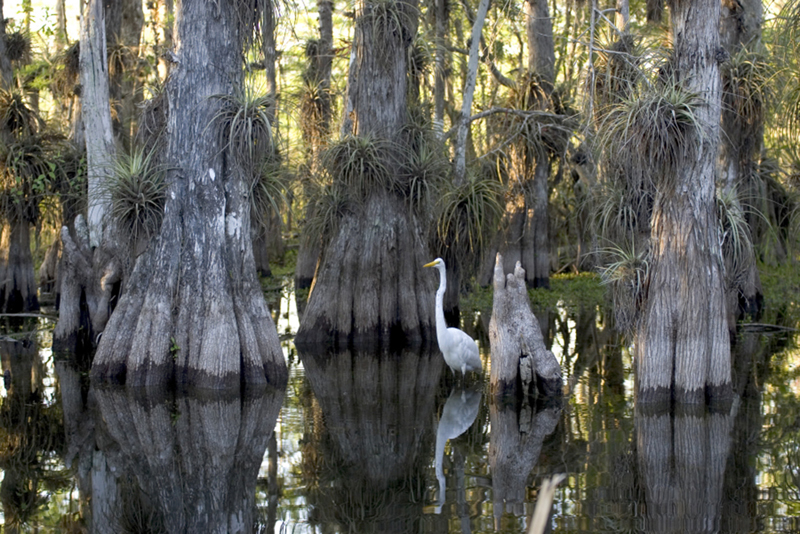| << Chapter < Page | Chapter >> Page > |
When a river reaches the ocean or a large lake, the water typically slows dramatically and any silt in the river water will settle. Rivers with high silt content discharging into oceans with minimal currents and wave action will build deltas, low-elevation areas of sand and mud, as the silt settles onto the ocean bottom. Rivers with low silt content or in areas where ocean currents or wave action are high create estuarine areas where the fresh water and salt water mix.
Wetlands are environments in which the soil is either permanently or periodically saturated with water. Wetlands are different from lakes and ponds because wetlands exhibit a near continuous cover of emergent vegetation. Emergent vegetation consists of wetland plants that are rooted in the soil but have portions of leaves, stems, and flowers extending above the water’s surface. There are several types of wetlands including marshes, swamps, bogs, mudflats, and salt marshes ( [link] ).

Freshwater marshes and swamps are characterized by slow and steady water flow. Bogs develop in depressions where water flow is low or nonexistent. Bogs usually occur in areas where there is a clay bottom with poor percolation. Percolation is the movement of water through the pores in the soil or rocks. The water found in a bog is stagnant and oxygen depleted because the oxygen that is used during the decomposition of organic matter is not replaced. As the oxygen in the water is depleted, decomposition slows. This leads to organic acids and other acids building up and lowering the pH of the water. At a lower pH, nitrogen becomes unavailable to plants. This creates a challenge for plants because nitrogen is an important limiting resource. Some types of bog plants (such as sundews, pitcher plants, and Venus flytraps) capture insects and extract the nitrogen from their bodies. Bogs have low net primary productivity because the water found in bogs has low levels of nitrogen and oxygen.
Aquatic biomes include both saltwater and freshwater biomes. The abiotic factors important for the structuring of aquatic biomes can be different than those seen in terrestrial biomes. Sunlight is an important factor in bodies of water, especially those that are very deep, because of the role of photosynthesis in sustaining certain organisms. Other important factors include temperature, water movement, and salt content. Oceans may be thought of as consisting of different zones based on water depth, distance from the shoreline, and light penetrance. Different kinds of organisms are adapted to the conditions found in each zone. Coral reefs are unique marine ecosystems that are home to a wide variety of species. Estuaries are found where rivers meet the ocean; their shallow waters provide nourishment and shelter for young crustaceans, mollusks, fishes, and many other species. Freshwater biomes include lakes, ponds, rivers, streams, and wetlands. Bogs are an interesting type of wetland characterized by standing water, a lower pH, and a lack of nitrogen.
[link] In which of the following regions would you expect to find photosynthetic organisms?
[link] B. The photic zone, the intertidal zone, the neritic zone, and the oceanic zone.

Notification Switch
Would you like to follow the 'Concepts of biology' conversation and receive update notifications?